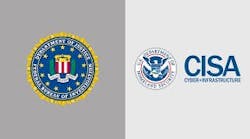Confidential government assessments say that Al Qaeda remains intent on attacking targets in the United States and that suicide bombings are clearly ''a preferred method of attack among extremists'' in the wake of last month's terror attacks in London.
The July 7 attacks on the London transit system, as well as others overseas, have prompted American officials to reassess potential threats to targets in the United States. Their conclusions, circulated among law enforcement officials by the Department of Homeland Security and the Federal Bureau of Investigation, differ little from many earlier assessments since the Sept. 11 attacks but make clear that officials see Al Qaeda as a continued threat at home.
Although American intelligence officials ''do not believe the London attack necessarily presumes a similar attack against rail or mass transit targets in the United States, there has been consistent threat reporting for some time suggesting that terrorists may have an interest in targeting mass transit systems,'' according to a security bulletin on July 20.
A second security bulletin also prepared after the London bombings warned that in addition to setting off bombs on trains and subways, Al Qaeda might seek to derail trains or crash a truck carrying flammable material into trains.
Intelligence officials are also concerned that terrorists linked to Al Qaeda or other terrorist groups may again turn to airplanes as a method of attack by sending operatives to flight training schools or using ''an increased number of operatives'' in the aviation industry to evade tightened airport security measures.
Still another target considered vulnerable by intelligence officials are high-rise apartment buildings. In one potential terrorist plot that officials have previously linked to ones considered by Jose Padilla, an American citizen now imprisoned as an enemy combatant, the bulletin says Al Qaeda may consider renting rooms in a high-rise building and using natural gas as an explosive to destroy it. But it cautions that the feasibility of such a plot is questionable.
The bulletin suggests that fresh intelligence collected as recently as this spring showed that Al Qaeda ''remains interested in striking the homeland to undermine U.S. security and damage the U.S. economy.'' Since the London bombings, American officials have tightened security at many mass transit systems and have been combing leads from Queens to Oregon in search of possible connections to the attacks. So far, officials say they have found no hard evidence to suggest any complicity or knowledge by anyone in the United States, nor have they found any evidence to suggest plans under way for an attack here.
''We have no specific credible information to indicate that an attack in the United States is imminent or that Al Qaeda operatives are in the United States to conduct a homeland attack,'' one of the intelligence bulletins concluded.
With federal officials seeking to provide law enforcement officers with quicker and more useful information to guard against terror attacks, some local officials have become more aggressive in developing their own policies and procedures.
A group of police chiefs, frustrated by what they see as the slow pace of information from federal officials, has begun creating a network to share terrorist-related intelligence.
And the International Association of Chiefs of Police, with 20,000 members worldwide, has issued new training guidelines to its members advising them to have officers shoot a suicide bomber in the head to avoid a life-threatening detonation.
The new guidelines, which were developed before the London bombings and first reported Thursday by The Washington Post, represent a more deadly posture in dealing with the threat of possible suicide bombers, said Joseph Estey, who is president of the chiefs' association and the police chief in Hartford, Vt.
''These are new circumstances for us to deal with, and this is an aggressive policy to respond to a narrow set of circumstances,'' Chief Estey said in an interview Thursday. If an officer believes he is confronting a suicide bomber who may be about to explode a bomb, he said, the new guidelines ''call for a head shot, which unfortunately is the securest way of disabling someone who may have a suicide device and may try to detonate it.''
Chief Estey acknowledged that the shooting death last month in a London subway of a Brazilian man, whom the police mistakenly thought was a suicide bomber, underscored the tragic possibilities if the police make the wrong decision.
For an officer to make a spot decision on whether someone is a would-be suicide bomber ''is a real tough question, and there are situations where you're not sure,'' he said. ''But when you're making those decisions on the fly, you have to have the greater public good in mind and try to save other people's lives.''
Copyright ©2005 The New York Times Company

